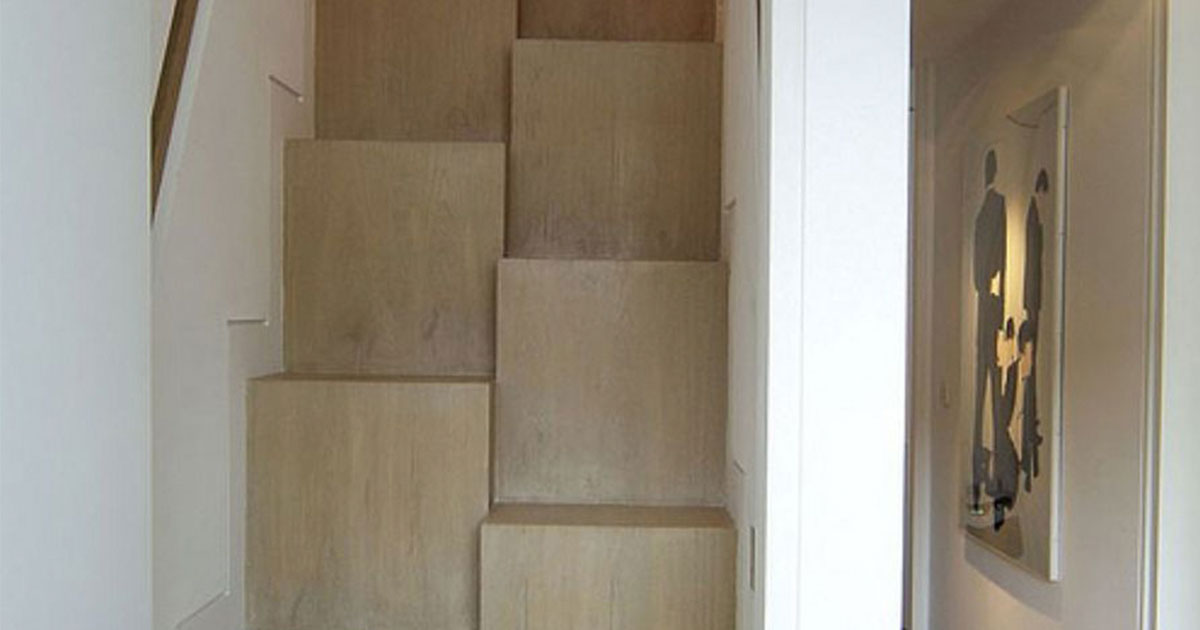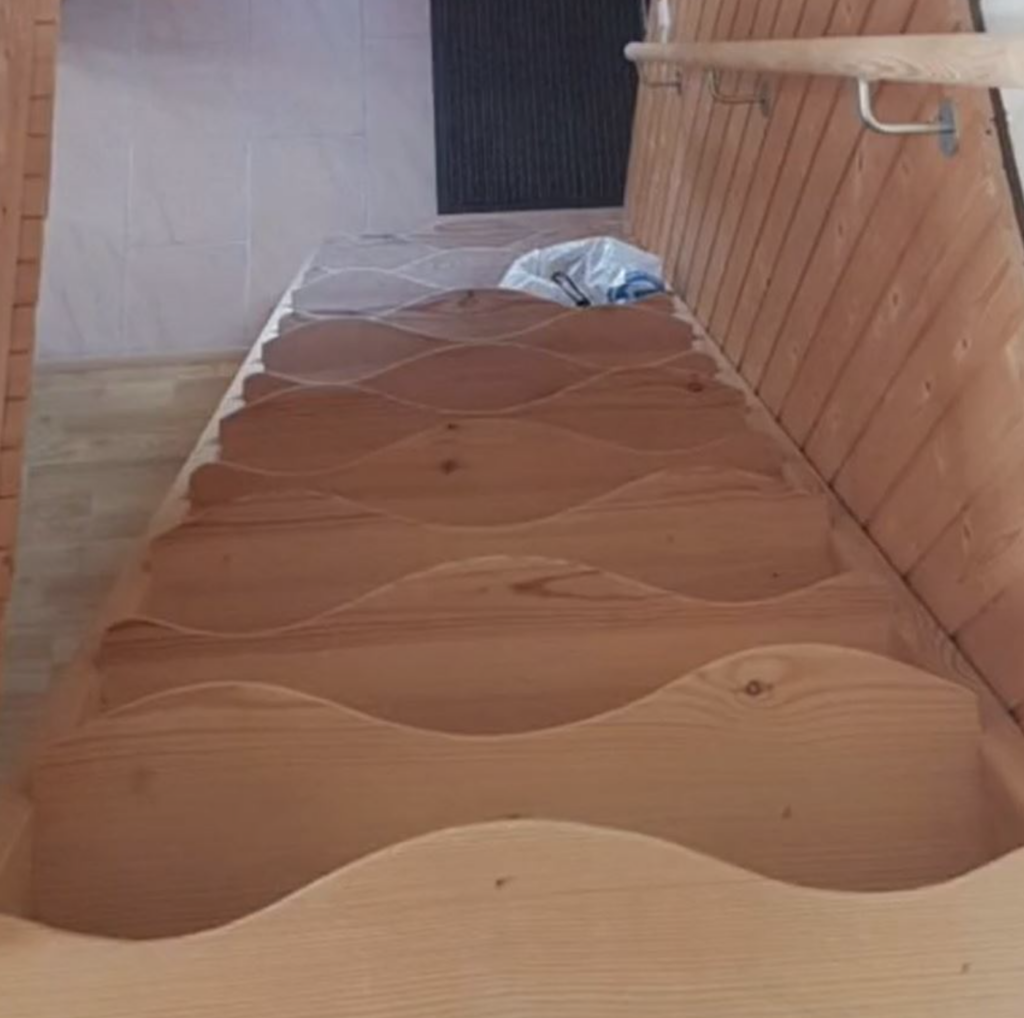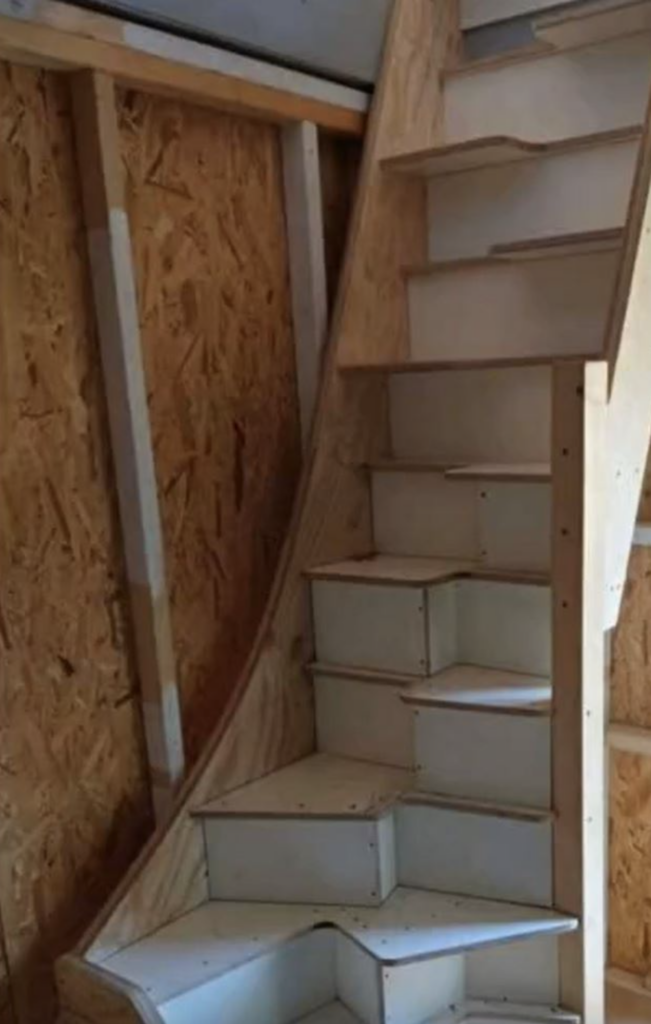
Witches’ stairs are a distinctive and fascinating architectural element that became well-known on TikTok a few years ago. Despite their eerie moniker, witches’ steps are not associated with superstition; rather, they serve a useful purpose. In actuality, they can be both aesthetically beautiful and practical when correctly planned and built.

Witches’ Stairs: An Unexpected Fix
Witches’ staircases are surprisingly helpful, especially in homes with limited space, although they are not as exciting as the beliefs linked with them. They are frequently found in tiny houses, lofts, and attics. They are known as “alternate tread stairs” by architects.

How Witches’ Steps Operate
There are two ways in which this design saves space. Two things about the steps: first, they are staggered; second, each step is half the width of a regular step. Together, these components produce a staircase that is smaller than those seen in typical houses. These staircases, albeit smaller in size, can also hold more books or showcase priceless objects. “The distance between treads on a given side of an alternating-tread stair is actually twice the unit rise, which gives you more free tread area and therefore a safer stair in theory,” says author Scott Schuttner of “Basic Stairbuilding.”
Despite common misconception, witches’ stairs in the US comply with safety regulations and construction rules. A domestic witches’ staircase is usually 27 to 30 inches broad, compared to a regular staircase’s three feet width.

The History of the Witches’ Stairs
An inventor by the name of J.M. Lapeyre received a patent for a metal rendition of witches’ steps in 1985. In commercial and warehouse situations, he saw this creative stair solution as a secure replacement for ladders in confined places. It is interesting to note that this design, also dubbed witches’ stairs or alternating tread steps, is widely used on commercial ships and oil rigs. It is also referred to as ship ladders or ship stairs.
Dispelling Mythologies
An urban legend accompanied recordings of witches’ staircases that first appeared on TikTok in 2021. The stairs were put into homes in Massachusetts during the Salem witch trials in the seventeenth century, so the belief goes, to keep witches away because “witches can’t climb up them.” This theory has been refuted, though. The term “Jeffersonian” or “Jefferson stair” refers to a different story that Thomas Jefferson originated the concept. However, the 1888 publication “Monckton’s One Plane Method of Hand Railing and Stair Building” contained documentation of an original design.
The idea that witches’ stairs were made to keep out witches is, in fact, unsupported by historical data. The notion that these stairs rendered witches crippled is “pure disinformation,” as Robin Briggs clarifies. There is no link between these customs and witches’ stairs, even if some owners of these unusual staircases also had additional safety precautions like hidden witch bottles or dead cats in the fabric. Briggs continued, “The closest belief was that a witch who entered the room would not be able to leave if you put a broom over the door lintel.”

Even in the absence of magical abilities, witches’ stairs continue to be an intriguing and ornamental substitute for grand staircases. They give any area a dash of individuality and quirky charm.


